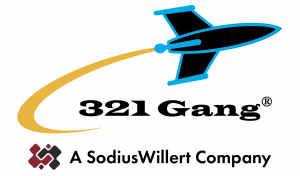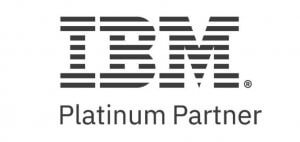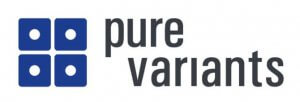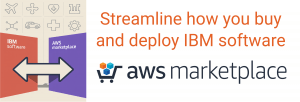Honeywell MVCS team reduced cycle time by 50% and costs by 30%
The Honeywell MVCS team reduced cycle time by 50% and costs by 30% through the successful application of pure::variants Product Line Engineering, IBM ELM, and the Scaled Agile Framework (SAFe)

This story is a summation from the original document found here: https://adprograms.aviationweek.com/content/dam/Informa/adprograms-aviation/2022/programexcellence/2022_submissions/supp_sysdd/SupplierSysDD_Honeywell_Micro_VCS_50.pdf. This document was a submission to Aviation Week.
The Honeywell Micro Vapor Cycle System (MicroVCS) is an innovative and lightweight thermal management system designed for cooling electronic components, batteries, and aircraft cabins. It is particularly well-suited for electric vertical takeoff and landing aircraft and helicopters, thanks to its small size, low weight, and energy efficiency. Compared to other vapor cycle systems, the MicroVCS is up to 35 percent lighter and 20 percent more efficient while providing the same cooling capacity. Its unique oil-free technology and a limited number of moving parts make it highly reliable and virtually maintenance-free, resulting in low ownership costs.
The MicroVCS program successfully reduced the product development cycle from 48 to 24 months and decreased R&D expenses by 30 percent. Honeywell achieved this by implementing Agile practices and utilizing scaled Agile to manage integrated features among different teams. By adopting new tools and challenging traditional program management approaches, Honeywell improved design flexibility and responsiveness, resulting in more efficient programs and better product solutions. This Agile approach has allowed Honeywell to incorporate customer and supplier feedback into the design, making the system ready for deployment.
By implementing Agile methodologies and Product Line Engineering, the MicroVCS team is leading the way in Honeywell Aerospace, creating processes and mechanisms that can be applied to other programs, resulting in cost savings. The MicroVCS system’s modular design allows for customization and reusability, reducing development time and cost. By prioritizing high-risk components first and overlapping development, the program successfully reduced the overall schedule by 50 percent and cost by 30 percent.
The MicroVCS system is designed to be flexible and tailored to meet customer needs. Unlike off-the-shelf systems that require costly updates, Honeywell’s Product Line Engineering approach allows for the creation of custom solutions without major modifications to the aircraft or core system. This approach enables Honeywell to deliver MicroVCS solutions that are specifically tailored to each customer’s needs, providing cost-effective solutions.
The MicroVCS system offers a light and low-cost cooling solution with a lower Global Warming Potential (GWP) than traditional systems, making it ideal for the emerging eVTOL aircraft market. It utilizes a refrigerant with significantly lower GWP than standard options, aligning with global efforts to reduce greenhouse gas emissions. The MicroVCS plays a critical role in enabling this transition by providing a lightweight and cost-effective cooling solution.
To manage the complex development program, the MicroVCS team utilized the Scaled Agile Framework, breaking down the work into 12 scrum teams. The team conducted regular planning sessions to prioritize system features and ensure coordination and integration among the teams. Agile metrics, such as Say/Do ratio and Velocity, were used to track team performance and forecast future progress. Program milestones were also established to ensure key deliverables were on track.
IBM’s ELM tools, pure::variants Product Line Engineering solution, and the Scaled Agile Framework (SAFe) played a crucial role in the success of Honeywell Aerospace’s MicroVCS team. By embracing these innovative tools and processes, the team has achieved remarkable outcomes in terms of product weight, cost, and cycle-time reduction.
The MicroVCS team adopted a Product Line Engineering (PLE) approach, utilizing IBM Engineering Lifecycle Management solution along with pure-system’s pure::variants PLE product. This allowed them to modularize the MicroVCS system into a library of core components and create a “Feature Model” for each component, capturing various features and options. With the help of pure::variants, unique system variants could be automatically synthesized, linking features to development artifacts such as requirements, code, and verification. This approach enabled the team to rapidly produce custom, scalable system designs tailored to meet diverse customer needs, at a cost comparable to off-the-shelf solutions.
Additionally, the MicroVCS team implemented SAFe for the development of their integrated system, encompassing mechanical and electronic hardware. SAFe facilitated the planning and tracking of system objectives and features, allowing parallel sprints and coordination among scrum teams. The team utilized Portfolio SAFe, employing Epics, Features, and Stories to plan and track work incrementally. Epics represented significant solutions and initiatives at the portfolio level, which were decomposed into Features sized for a 3-month Program Increment (PI). Further decomposition led to Stories, coherent work units within Scrum Teams, sized for a 3-week Sprint. This hierarchical structure ensured effective collaboration and progress monitoring across the organization.
To support the implementation of SAFe, the MicroVCS team leveraged IBM Engineering Workflow Manager within the IBM Engineering Lifecycle Management suite. This tool provided native support for SAFe, enabling seamless integration with Requirements Management, Software Design, and Verification tools. The end-to-end digital thread facilitated traceability from planned Features to impacted requirements, code, and test cases. It also offered robust change control mechanisms, ensuring that changes were linked to approved work items with a comprehensive audit trail. This level of control and traceability is crucial in the aerospace industry, where certification authorities regularly review and audit development artifacts.
Through the combined use of IBM ELM, pure::variants, and SAFe, the MicroVCS team has revolutionized its development processes, achieving significant improvements in efficiency and customer-centricity. These tools have empowered the team to deliver tailored solutions, reduce development cycles, and enhance overall program execution.
Book a consultation with our experts to discuss how solutions like IBM ELM, pure::variants, and lean-agile can bring significant improvements to your product development efforts. info@321gang.com
By: Tom Hollowell



321 Gang | 14362 North FLW | Suite 1000 | Scottsdale, AZ 85260 | 877.820.0888 info@321gang.com
The Future is Now
We have helped our clients:
- Reduce development costs by 50-60%
- Accelerate time to market by 20-40%

